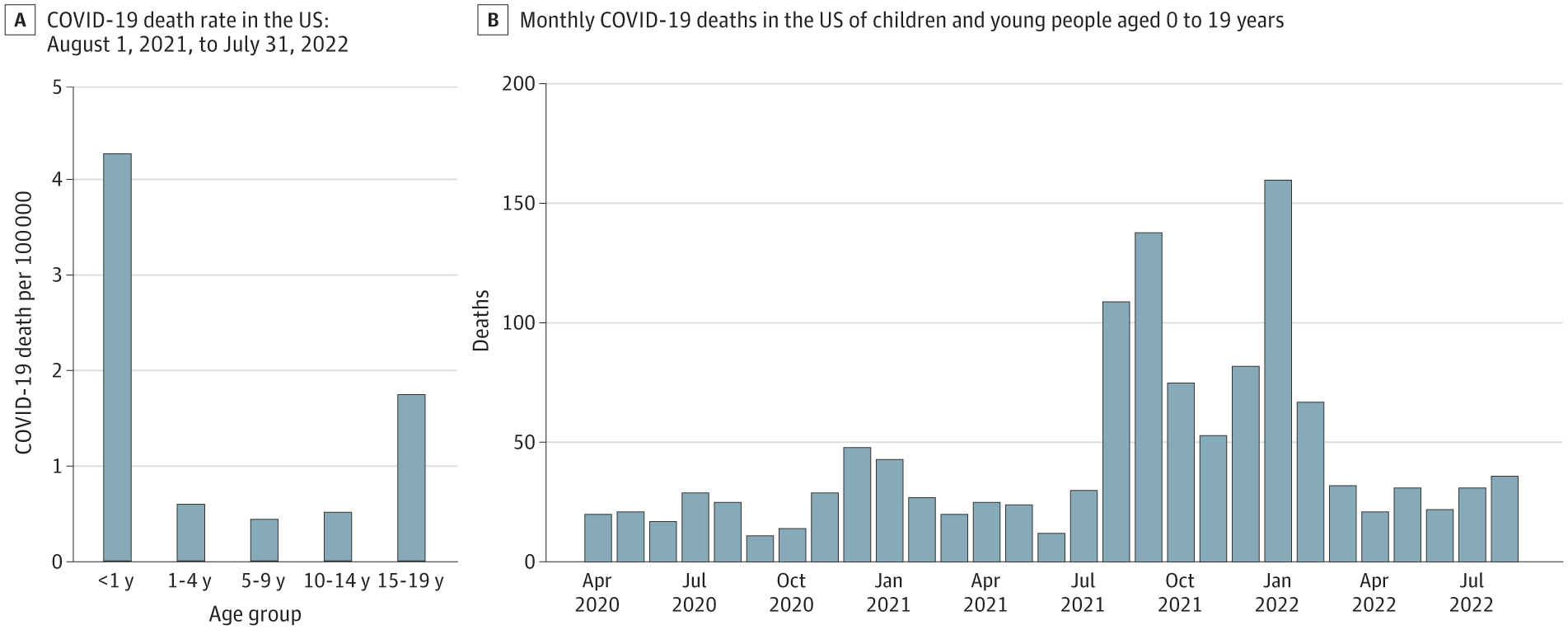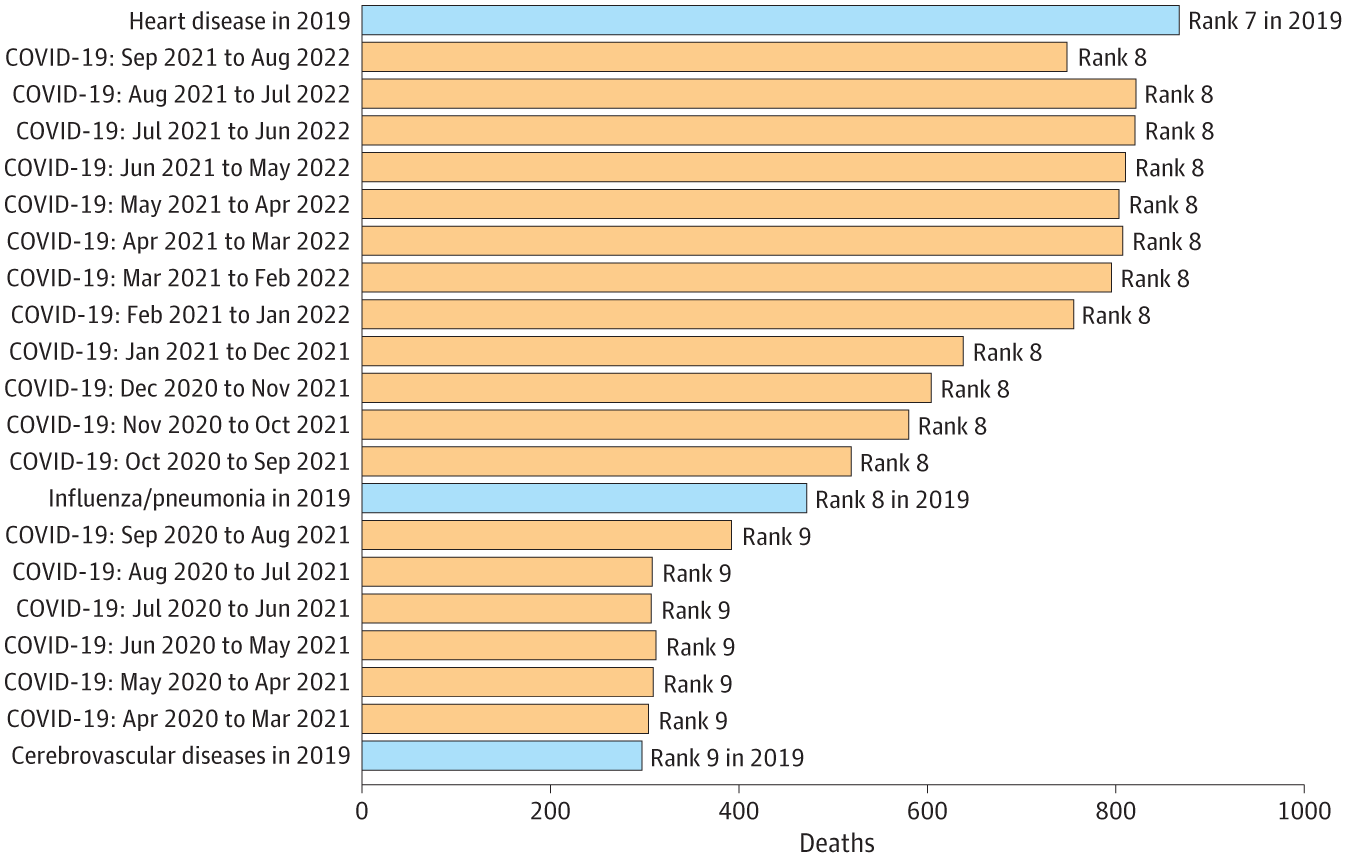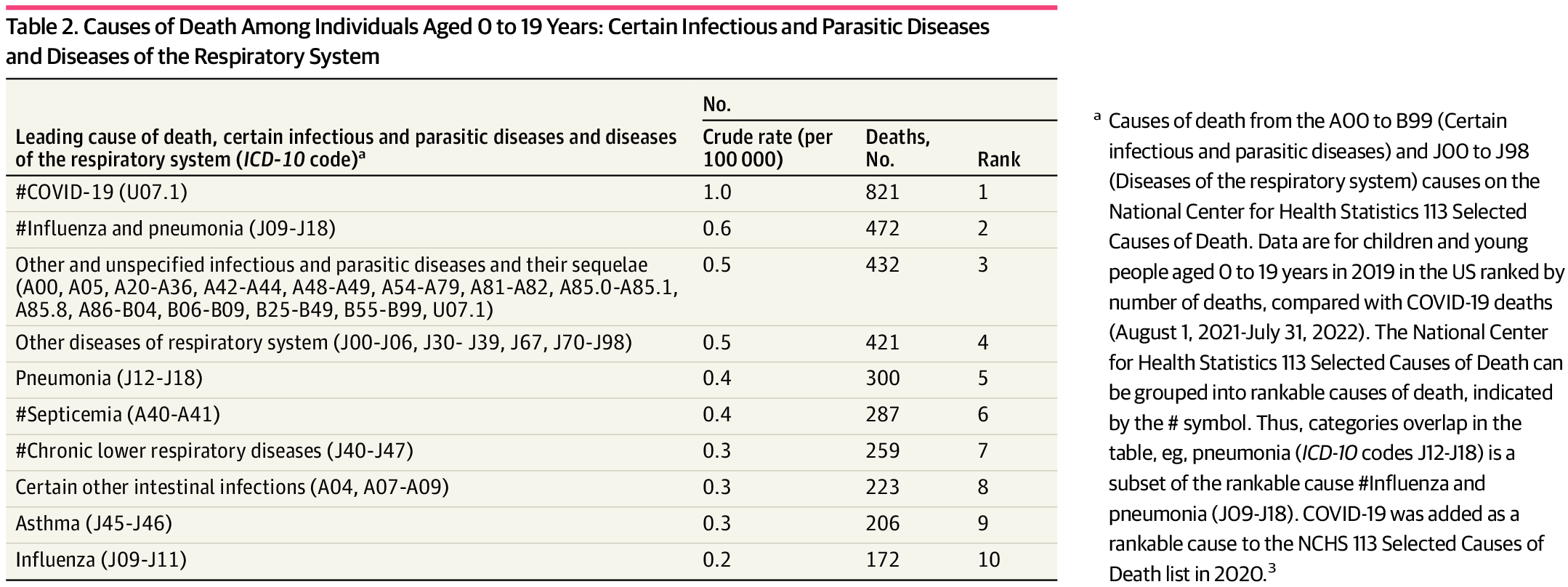As someone who has been following the antivaccine movement for over twenty years (and blogging about it for over 18 years), before the pandemic I never thought I would see my “provaccine” colleagues claim that children don’t need to be vaccinated against an infectious disease that kills at least as many children as measles did in the days before there was a vaccine. Indeed, that is basically the entire message behind the “Urgency of Normal” movement promoting a message during the Delta wave claiming that masks and COVID-19 mitigations in schools were not necessary because so few children die of the diseases, a state public health authority actively discouraging parents from vaccinating their children against COVID-19, and academics even recycling hoary old antivax tropes in a bioethics journal to argue against the need to vaccinate children against COVID-19. I suppose I shouldn’t have been surprised, as I’ve been reminding my colleagues who are shocked at how many doctors are antivaccine that such antivax docs have always been among us, but the intensity and degree of the pushback among colleagues against vaccinating children against COVID-19 and their utter obliviousness that the arguments they were making were nothing more than old antivax arguments indistinguishable from the arguments antivaxxers used to make about measles vaccines surprised even me. What particularly surprised and disappointed me is the degree to which seemingly eminent academic physicians, while showing concern about reports of myocarditis after vaccination, seemingly shrug their shoulders about the disease, thinking it seemingly “natural and healthy” for children to die of a vaccine-preventable disease. They even argue, as antivaxxers did prepandemic for measles and chickenpox “parties,” that we should let children catch Omicron rather than impose anything resembling pandemic restrictions like masking or vaccine mandates in a school ever again.
For example, Drs. Vinay Prasad and Allison Krug actually argued:
When it comes to infectious disease, normality means a world where they are routinely exposed to, and overcome, viral illness. For children, getting sick and recovering is part of a natural and healthy life.
As Dr. Jonathan Howard put it, the idea that vaccine-preventable diseases are healthy for children is an old anti-vaccine trope. So is this other statement by Drs. Prasad and Krug:
While the death of any child is a tragedy, Covid-19 is less deadly to children than many other risks we accept as a matter of course, including drowning, vehicle accidents, and even cardiovascular disease.
Well do I remember antivaxxers lamenting with ever-so-serious faux sorrow the deaths of children from, say, measles or Haemophilus influenza, but then quickly adding that the chances of this happening are so low that vaccines aren’t needed, or, as Drs. Prasad and Krug put it, COVID-19 should just be a risk that we accept “as a matter of course.” These “not antivax” doctors routinely take severe umbrage when it is pointed out to them that they are using exactly the same arguments that antivaxxers used to use before the pandemic for vaccines such as the MMR and pertussis vaccines, but they are, no matter how much these “not antivax” docs try to claim COVID-19 is different.
Whenever I hear arguments like theirs, I like to point out that children shouldn’t die and that, by and large, they don’t die at anywhere the same frequency as adults and old people. At least, they don’t now, given that the vaccine-preventable diseases that used to kill large numbers of children have been controlled. In other words, we correctly expect that the number of children who die of any cause every year should be small and quite rightly do not tolerate the preventable deaths of children. (At least, we didn’t until 2021 or so, when we saw the rise of physicians with a seeming—shall we say?—nonchalance to the deaths of children on media, both old and new, particularly on social media.
This brings me to a bit of data, specifically a study that was published a week ago in JAMA Network Open, Assessment of COVID-19 as the Underlying Cause of Death Among Children and Young People Aged 0 to 19 Years in the US. Let’s just say that, as Dr. Howard and I (and many others) have been arguing all along, COVID-19 is at least a comparable threat to children as any other prepandemic vaccine-preventable child infectious disease. The study, by an international group of investigators, led by researchers at the University of Oxford’s Department of Computer Science investigated COVID-19 mortality among children and young people (CYP) aged 0-19 using data from US Centers for Disease Control and Prevention databases. Specifically, they used data from the US Centers for Disease Control and Prevention Wide-Ranging Online Data for Epidemiologic Research (WONDER) database on underlying cause of death in the US to identify the ranking of COVID-19 relative to other causes of death among children and young people from birth to age 19. COVID-19 deaths were examined in 12-month periods between April 1, 2020, and August 31, 2022, compared with deaths from leading non–COVID-19 causes in 2019, 2020, and 2021.
I’m just going to go straight to the bottom line here:
There were 821 COVID-19 deaths among individuals aged 0 to 19 years during the study period, resulting in a crude death rate of 1.0 per 100 000 population overall; 4.3 per 100 000 for those younger than 1 year; 0.6 per 100 000 for those aged 1 to 4 years; 0.4 per 100 000 for those aged 5 to 9 years; 0.5 per 100 000 for those aged 10 to 14 years; and 1.8 per 100 000 for those aged 15 to 19 years. COVID-19 mortality in the time period of August 1, 2021, to July 31, 2022, was among the 10 leading causes of death in CYP aged 0 to 19 years in the US, ranking eighth among all causes of deaths, fifth in disease-related causes of deaths (excluding unintentional injuries, assault, and suicide), and first in deaths caused by infectious or respiratory diseases when compared with 2019. COVID-19 deaths constituted 2% of all causes of death in this age group.
I can almost hear my “urgency of normal” colleagues twitching and saying, “So what? That’s still a small number of deaths relative to the number of children who have had COVID-19.” Perhaps, but I’ve never found the argument that, hey, it “wasn’t that many dead children” to be a particularly persuasive argument. I’m funny that way. Still, let’s move on to a graphical representation:

A, COVID-19 death rates in the US for children and young people, where COVID-19 is listed as the underlying cause of death (International Statistical Classification of Diseases and Related Health Problems, Tenth Revision code U07.1) on the death certificate.1 Rates are calculated as COVID-19 deaths for the period August 1, 2021, to July 31, 2022, per 100 000 population (2021 population estimates). B, Monthly COVID-19 deaths in the US of children and young people, where COVID-19 is listed as the underlying cause of death (International Statistical Classification of Diseases and Related Health Problems, Tenth Revision code U07.1) on the death certificate.1
Not enough for you? How about this ranking? Notice how the death toll from COVID-19 is comparable to the prepandemic death toll due to heart disease.

For children and young people aged 0 to 19 years in 2019, leading causes of death included heart disease (ranked seventh), influenza/pneumonia (eighth), and cerebrovascular diseases (ninth). We compare these causes of death to COVID-19 deaths in each 12 month period for which data were available: April 2020 to March 2021, May 2020 to April 2021, and so on. Data for recent months are not yet complete.14
Still not enough? Let’s look at infectious diseases alone:
Now let’s let the authors really lay it on the line in blunt terms:
While other causes of death, such as unintentional injuries (18.4%), assault (6.9%), and suicide (6.8%) represented a large percentage of all causes of death, COVID-19 ranked fifth in disease-related causes of deaths (excluding unintentional injuries, assault, and suicide), and first in deaths caused by infectious and respiratory diseases. Comparing deaths from COVID-19 with deaths from other vaccine-preventable diseases historically, COVID-19 caused substantially more deaths (821 deaths in our study period in CYP) than major vaccine-preventable diseases did before vaccines became available: hepatitis A (3 reported deaths in children per year in the US), rotavirus (20-60 reported deaths in children per year in the US), rubella (17 reported deaths in children per year in the US), varicella (50 reported deaths in children per year in the US),15 and measles (495 total reported deaths per year,16 the vast majority in children17).
In summary, we found that COVID-19 is now a leading cause of death for CYP aged 0-19 years in the US, and the top (first) leading cause of death among infectious and respiratory diseases.
Worse, the results of this study likely underestimate the impact of COVID-19 on the health of children. They also likely underestimate the number of deaths attributable to COVID-19, for these reasons:
Our findings need to be considered in the context of several limitations which mean that we may have underestimated the true mortality burden of COVID-19 in CYP aged 0 to 19 years. Analyses of excess deaths have suggested underreporting bias in COVID-19 deaths22; specific criteria for determining COVID-19 deaths is heterogeneous across the US and has changed over time; and delays to reporting may be substantial for recent time periods.14 We consider COVID-19 as an underlying (and not contributing) cause of death only, but COVID-19 amplifies the severe impacts of other diseases, and mortality hazards from coinfection (eg, influenza23) are increased with accompanying comorbidities. The category of deaths from influenza and pneumonia combines a variety of causes, to which SARS-CoV-2 could be a contributing factor.23,24 Recent evidence also suggests that COVID-19 may contribute to serious long-term sequelae25 in children and adolescents, which are unlikely to have been captured in these data.
In a press release, one of the coauthors puts it into proper perspective:
Assistant Professor Robbie M. Parks of Mailman School of Public Health, Columbia University, a co-author of the study, said: “If you look at infectious diseases in children in the US historically, in the period before vaccines became available, hepatitis A, rotavirus, rubella, and measles were all major causes of death. But when we compared those diseases to COVID-19, we found that COVID-19 caused substantially more deaths in children and young people than those other diseases did before vaccines became available; this demonstrates how seriously we need to take COVID-19 prevention and mitigation measures for the youngest age groups in the US and worldwide.”
I like to compare the death toll from COVID-19 to the death toll attributable to measles before the vaccine to make this point. In the decade before the first measles vaccine was licensed in 1963, measles routinely infected three to four million people, resulting in 400-500 deaths a year. Since the pandemic began, approximately 1,300 children and young people 0-19 years of age have died of COVID-19. That’s under three years, and most of these deaths have occurred during the last two years.
But wait! I can sense “not antivax” doctors saying that there weren’t nearly as many children in 1960 as there are now. Well, yes and no. There were 64.5 million children in the US in 1960. To be precise, I will conceded that the numbers I found aren’t strictly comparable because the old statistics count ages 0-17 as children and don’t go up to 19, but we’re not interested in three decimal point precision but ballpark figures. So, using that same source I find that there were 72.8 million children age 0-17 in the US in 2020. In other words, even adjusted for population growth, the COVID-19 death toll among children now is in the same ballpark as the death toll from measles was in 1960. To put it another way, at best, COVID-19 is roughly as deadly to children as measles was before the vaccine (and that’s even with a percentage of the population ages 0-19 having been vaccinated). More likely, COVID-19 is considerably more deadly to children than measles was in the 1950s, before the vaccine was developed.
Yet back then doctors and scientists considered measles, its status as a “normal childhood illness” notwithstanding, to be a deadly threat that warranted a vaccine—and rightly so! We shouldn’t tolerate 500 children dying every year and something like 1-3 per 1,000 suffering severe neurological sequelae, and in the 1960s we didn’t. The measles vaccine resulted in a dramatic decline in the number of cases of measles per year. In contrast, today a distressing number of physicians just shrug their shoulders metaphorically at an equal or higher level of carnage due to an infectious disease, and trot out the same old antivax arguments used for measles based on COVID-19 supposedly being “not a threat” to children in order to argue against pandemic mitigations in schools or vaccine mandates. And, yes, I’m calling out certain physicians by name, including Drs. Vinay Prasad, Allison Krug, and Tracy Beth Høeg, to begin with, for doing just this.
Let me finish by putting it this way. If you use arguments against vaccinating children against COVID-19 that are in form identical to the arguments that antivaxxers used to use before the pandemic to argue against vaccinating children against measles, pertussis, and the like, namely that the disease isn’t a threat to the children, while ignoring that the disease kills hundreds of children a year, what should I call you? You’ve lost the right to get all indignant if I call you an antivaxxer. If the name fits…


